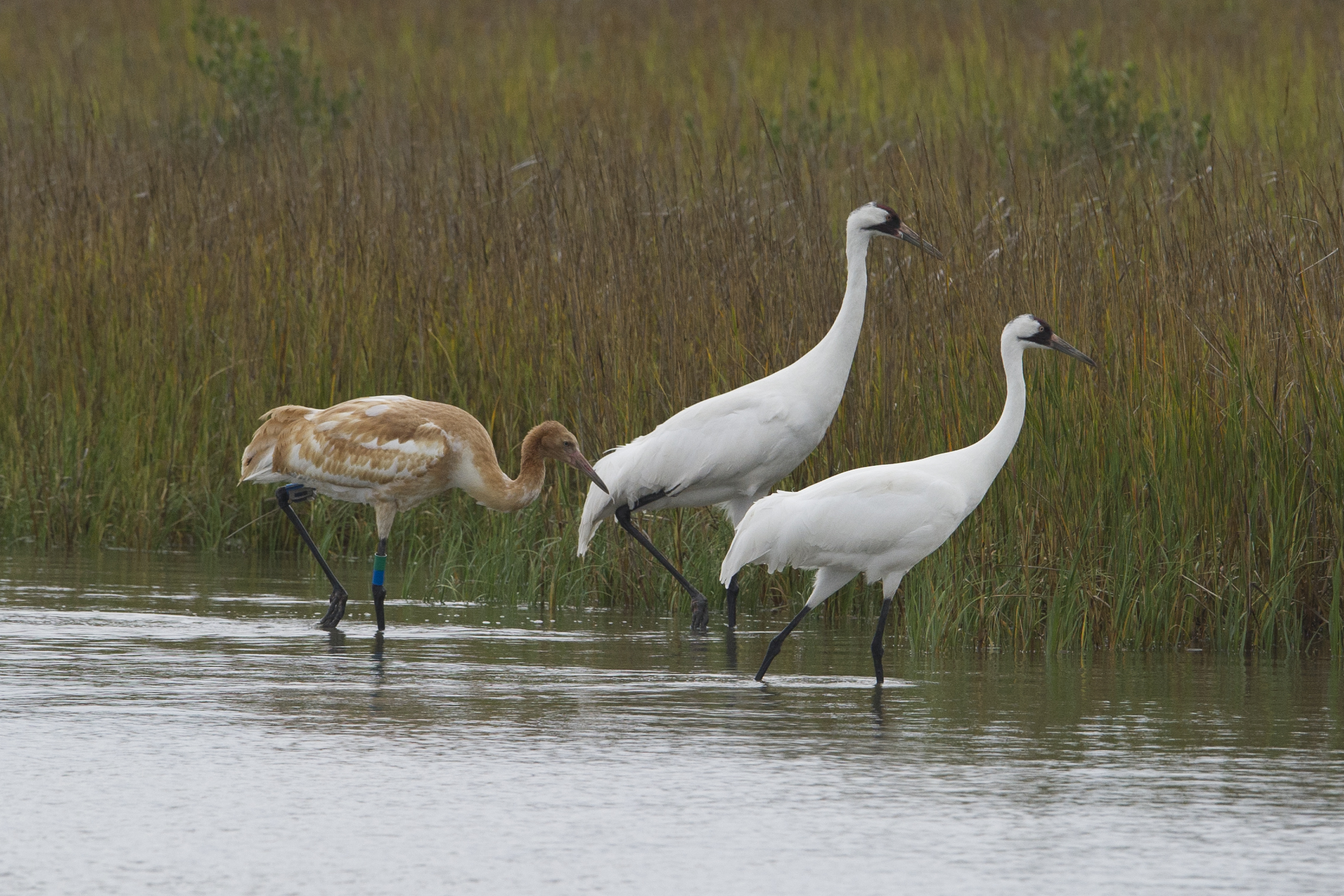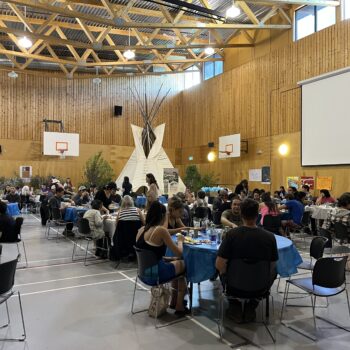
Project Description
Using SDM for Whooping Crane Recovery Planning
The whooping crane is a flagship species of conservation in North America that has experienced range-wide population declines due to loss of breeding and migratory habitat (e.g., conversion to agriculture) and overharvesting. There is only one remaining self-sustaining population — the Aransas-Wood Buffalo Population (AWBP), which nests in and around Wood Buffalo National Park in Canada and overwinters in coastal marshes in Texas. There are two reintroduced populations in the U.S. that rely on continued human intervention — the Eastern Migratory Population (EMP) and the Louisiana Non-Migratory Population (LNMP). While the AWBP has been growing consistently in recent years, the EMP and LNMP have faced a variety of stressors that have prevented these populations from becoming self-sustaining.
Over the past several decades, legislative and conservation actions have sought to recover whooping cranes. Starting in 1967, eggs collected from the AWBP were used to establish a captive population (i.e., Species Survival Program [SSP]), which is distributed among 17 institutions in the U.S. and Canada. Egg collection ceased in 1998 after the SSP had become self-sustaining.
In early 2022, the Wilder Institute Calgary Zoo, Environment and Climate Change Canada (ECCC), and Parks Canada initiated a process with an Advisory Committee to work collaboratively to develop recommendations on whether and how the resumption of wild egg collection from the AWBP and other related actions might advance whooping crane recovery. The purpose of this effort was to take a deliberative, decision-focused approach for selecting conservation actions to ensure effective recovery of whooping cranes, while also considering social, cultural, ecological, and other interests. Compass designed and facilitated a structured decision-making process to guide the Advisory Committee in developing its recommendations.
Compass provided decision support by structuring the development of objectives, performance measures, and alternative management actions. Additionally, Compass supported the group in evaluating those alternatives with population models and expert judgment and deliberating over expected consequences and key trade-offs. The process culminated in a 3-day workshop in Calgary in December 2022, where the Advisory Committee reached consensus on a preferred plan of action that is expected to achieve the down-listing criteria of the International Recovery Plan within approximately 25 years.
Photograph by John Noll, USDA

